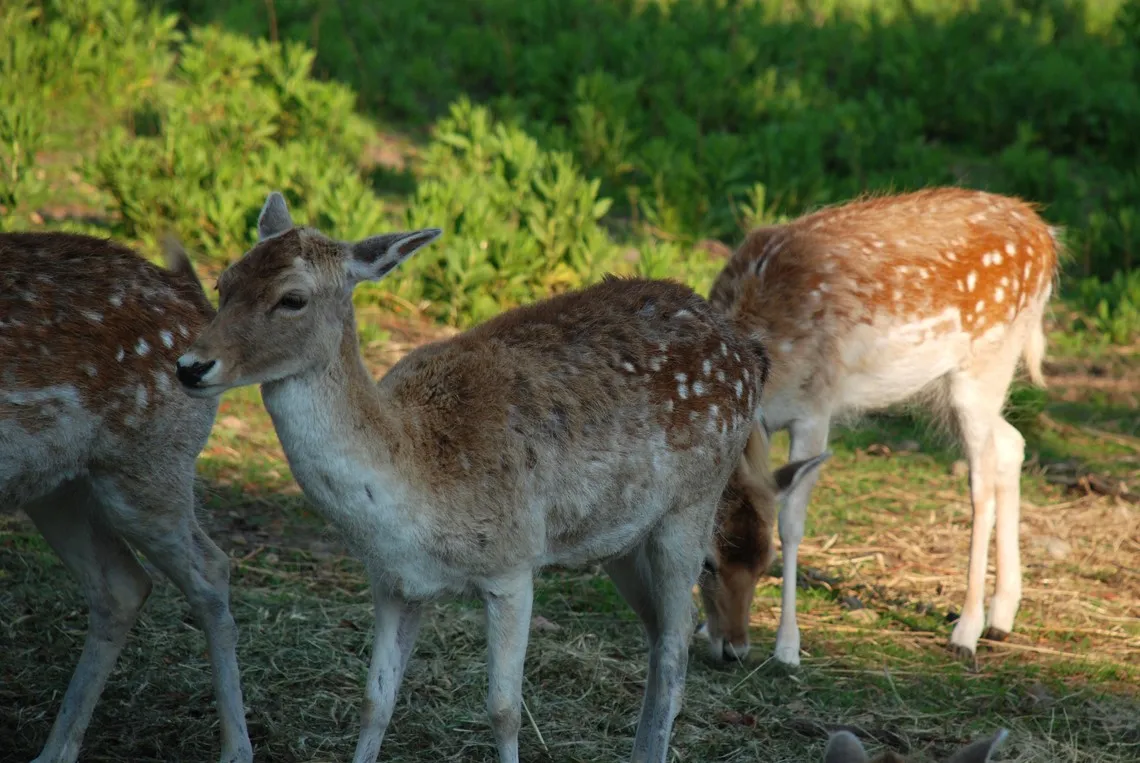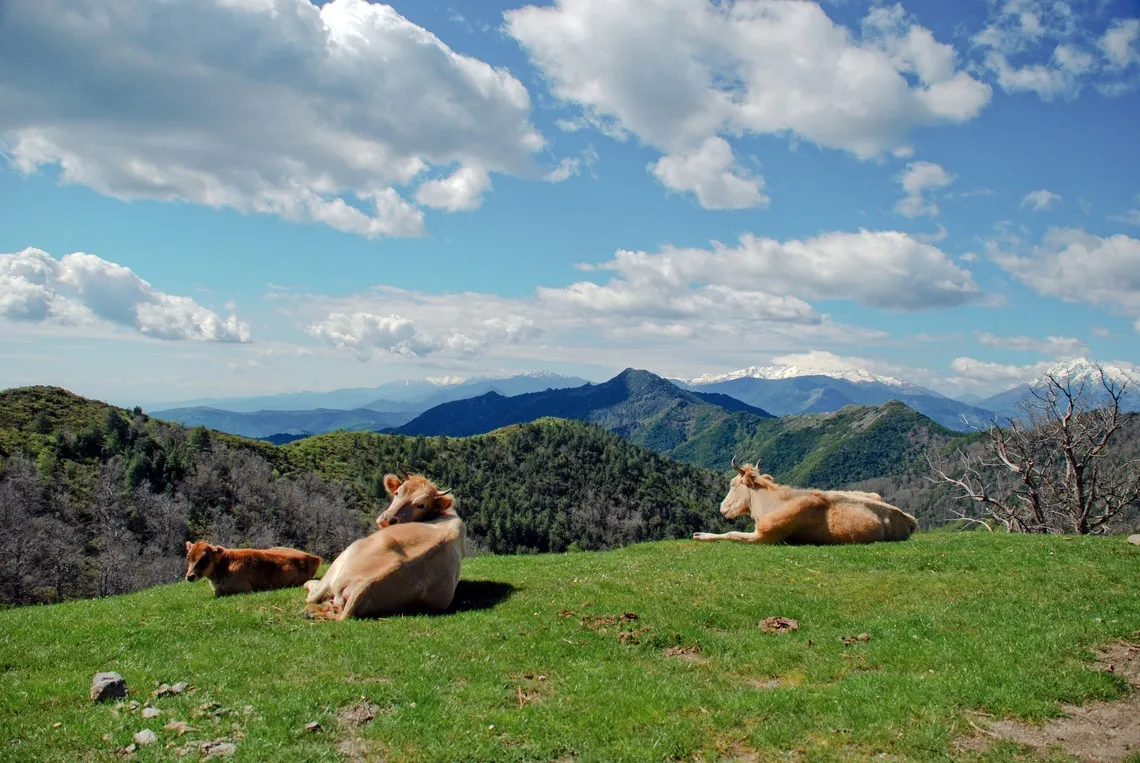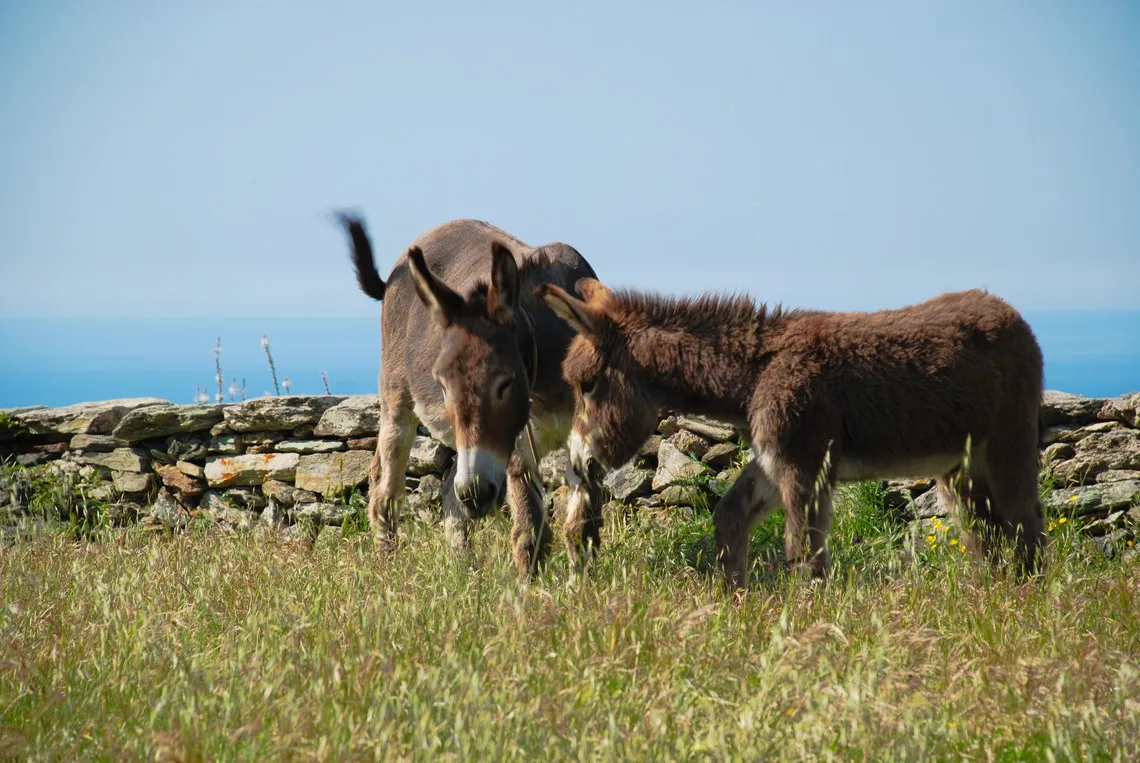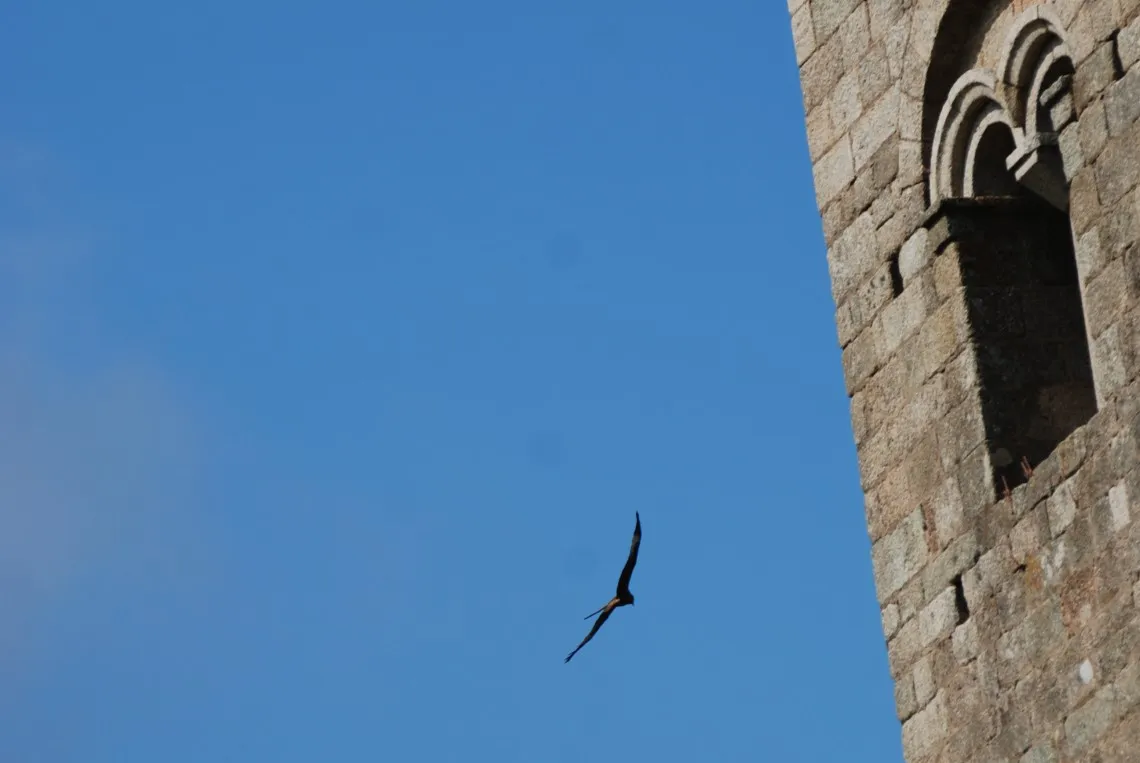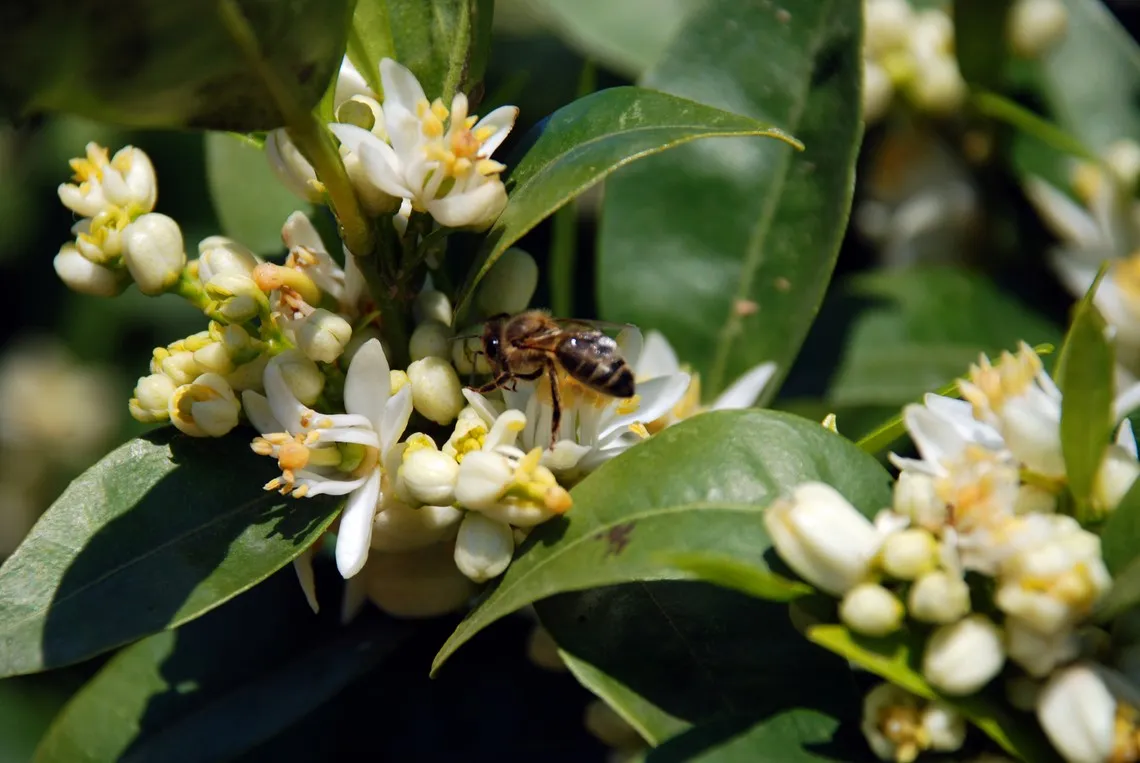Corsican fauna
Mammals in Corsica
Most European land mammals can be found in Corsica: fox, weasel, wild rabbit, hare, hedgehog, shrew, field mouse. The Corsican deer, nearly extinct in the last century, has been successfully reintroduced in Corsica. It can be seen in the Corsican Natural Regional Park, as can the European mouflon, the emblem of Corsica. A wild high-mountain descendant of primitive domesticated sheep, the mouflon is present in the Asco valley and Cinto and Bavella massifs.
Are you tempted by a night walk? If you keep your eyes open you may see bats passing by. There are 22 species in Corsica, representing more than half of the wild land mammals of the island. Bats of different species but also of different sizes live together on the Isle of Beauty, including the smallest in Europe, the Common Pipistrelle, and the largest and rarest on the continent, the Great Noctule.
Domestic animals that have evolved from the wild
It is not uncommon to see domestic animals on the roadside. They are essentially indigenous breeds that have developed characteristics over time that allow them to adapt to the Corsican climate and terrain.
Among them is the cursinu, a Corsican dog with a brindle fawn coat known for its robustness and versatility, whether as a hunting dog or as a shepherd.
The Corsican goat, recognizable by its long coat with multiple colours giving it effective protection against the thorns of the scrub, is characterised in particular by its acrobatic and rustic aspects.
During your stay, you will also have the chance to meet Corsican ewes, bred for their milk but also for the production of waterproof, warm and robust wool.
Corsican cows live practically in freedom and feed essentially on maquis plants. They are easily recognisable, especially thanks to their tawny coat and lyre-shaped aurochs-type horns.
There is also a good chance that you will come across Corsican pigs, of different colours but recognisable mainly by their small size. They live freely in the mountain pastures in summer and in the maquis scrubland in autumn and winter.
Among the domestic animals able to evolve in the wild environment of Corsica, we also find the Corsican donkey, known in particular for its robustness and its dexterity on the steep paths of the island.
The Corsican horse "Cavallu corsu" or "Paganacce" is a small, skilful, stocky horse with a bay, pangaré or black coat. One can encounter herds grazing in freedom on mountain meadows and the pozzines.
Reptiles and amphibians in Corsica
Several types of lizards, salamanders and geckos are present in Corsica.
Among them are the Bédriaga lizard and the Sicilian lizard, two endemic species that can be found everywhere on the island.
The Isle of Beauty is also home to Hermann's tortoise, a terrestrial tortoise that can be found mainly in the scrubland and which has practically disappeared in the rest of France, or the Corsican pond turtle, a small freshwater terrapin that is also endangered.
If during your hikes you pass by streams, you will probably come across small European mountain salamanders that thrive in quiet waters.
Corsica is also home to a few harmless snakes, but there are no vipers.
Sedentary birds, migratory birds and birds of prey
The red kite reigns in the air, scouring the skies in search of prey. With a wingspan of 1.5 m, it can be found all over the sky of Corsica. It can be recognised by its arrowhead red tail and its tricoloured plumage (white, red and black). The Isle of Beauty is also home to the barn owl, known for its discretion, as well as the scops owl, a nocturnal bird of prey that is sometimes difficult to distinguish from a barn owl and which beeps its way through the night.
Many other birds of prey are present in Corsica, including buzzards, peregrine falcons, kestrels, hawks, goshawks and ospreys. The golden eagle and bearded vulture benefit from a conservation programme coordinated by the Corsican Natural Regional Park.
Corsica is home to the only endemic bird in mainland France: the Corsican nuthatch. Recognisable in particular by its small size (12 cm) and its tricolored coat (bluish gray, black and white), the small eagle-bird feeds on the pine nuts of the laricio pine.
Most European birds can be found in Corsica: swift, blackbird, thrush, robin, chickadee, swallow, goldfinch, greenfinch, chaffinch, jay, nightingale, wagtail, turtledove, swift warbler, sparrow, kingfisher, crow, raven...
The coasts and wetlands are stopovers for migratory birds: duck, shearwater, European bee-eater, egret, hoopoe, sandpiper, heron, swallow, stork, pink flamingo...
The Corsican coast is the only place in France where Audouin's gull breeds, of which there are several colonies. The Corsican colony of crested cormorants is one of the most important in the Mediterranean.
Insects
If you come to Corsica in summer, you will certainly hear crickets, cicadas and locusts. In spring, you will see flowers covered with beetles and butterflies of many colors, including the pearly blue and the Corsican hairstreak, two endemic butterfly species of the island.
There is also a chance that you will see pink bees, which have all the characteristics that allow them to adapt to the climatic variations according to the seasons and to the environment conditions. Spring honey (clementines, fruit trees, rockrose, oaks, myrtle...), spring maquis honey (heather, lavender, cytis, broom, hawthorn...), chestnut tree honey in May, summer maquis honey (broom, brambles, thyme...), autumn maquis honey (strawberry tree, ivy, inula, sarsaparilla...).
The Isle of Beauty is also home to the malmignatte or European black widow, a small black spider with yellow, orange or red spots. Measuring 4 to 15 mm, this insect lives under stones or in old walls. The spider bites when it feels threatened. One must be careful because this bite is venomous, potentially dangerous for fragile people.













